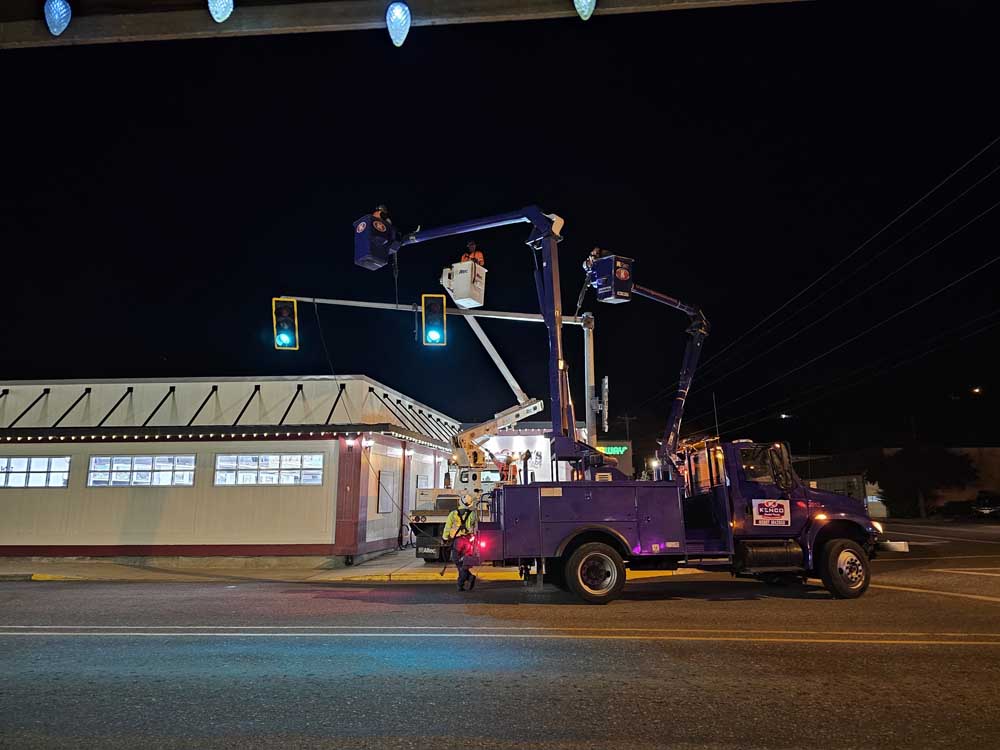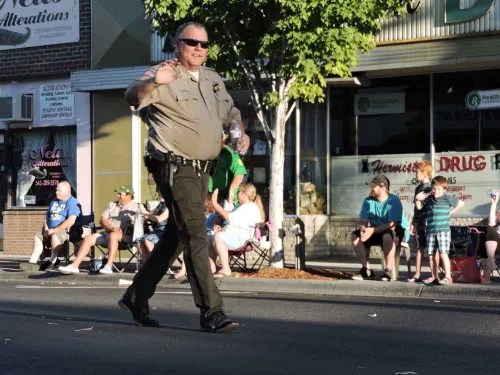Railroads support sheep, cattle ranchers
Published 5:00 pm Tuesday, August 29, 2006
Sumpter Valley’s rails over Dixie ease trip to market. Legend of Old 2020 not for the immodest.
The romance of the cowboy has allured many a young man throughout the years. The image of standing tall in the saddle was very appealing – until he had to ride drag on a long, dusty cattle drive to the nearest market. Such events tended to weed tenderfoots quickly from the ranks.
Still, for many years following the Civil War cattle drives were the only way to move herd to the nearest railroad.- Dodge City, Kan., on the Santa Fe Railway, became famous as a destination for many cattle drives heading north from Texas.
The arrival of railroads in Eastern Oregon in the early 1900s smoothed moving cattle from the ranch to market in Grant County. Before that time, ranchers had to make a long trail drive to Baker City or the Columbia River to the railhead, in order to get their cattle to the stockyards in Portland, the largest west of Kansas City, Mo. or Omaha, Neb.-
But in 1910, the Sumpter Valley Railway, a narrow gauge line reaching west from Baker City, flung its steel rails over Dixie Summit to reach Prairie City, the end of the line until the rails were pulled up again in 1933.- Plans to extend the railroad to a connection with the Nevada-California-Oregon near Lakeview never came to fruition.
Every fall for 23 years, area ranchers drove their cattle to Prairie City, to be hauled to Baker City in diminutive stock cars.- According to Vera Schultz, DeWitt museum curator in Prairie City, the railroad simply loaded the cattle directly into waiting stockcars. Ranchers brought cattle from throughout the John Day River Valley.
Cattle trains left Prairie City about nine every Saturday evening, usually pulled by two small steam locomotives. The cattle were transferred to the stockyards in Baker City, waiting for a Union Pacific stock extra that originated in Pocatello, Ida. The cattle would reach the stockyards in Portland early Monday morning, ready for auction.
The stockcars were small, only able to hold a dozen or so head of cattle. Ranchers soon complained about the low roofs of the cars, saying that their cattle were getting bowed heads on the journey back to Baker.- The railroad soon added cupolas, much like those found on cabooses, to the cars to alleviate the problem.
The cars also acquired a secondary purpose, according to stories circulating through the area.- “The Legend of Old 2020,” recollected by former DeWitt Museum curator Babs Brainard, relates the story of how “ladies of the night” were transported to the logging camps in stock cars.
“I don’t know if that was the actual car, because no self-respecting person would be caught dead in that car,” said Nadia Shultz, DeWitt Museum staff member, referring to its normal use for hauling cattle.- “They may have been ladies of the night, but they weren’t stupid!”
Not all rail trips were uneventful. In 1915, a train loaded with 18 loaded stock cars stopped on a curve near Sumpter. When the engineer released the brakes to start the train again, the brakes failed to release on each car, and every one tipped over on its side. The cattle were unhurt, and took quick advantage of the situation to make their escape.- This escapade started the biggest railroad roundup in Sumpter Valley history, according to a “Rails, Sagebrush & Pine” by Mallory Hope Ferrell, 1967.
Another local story tells of a conductor who recruited local cowboys to retrieve cattle who escaped from a train, offering them $10 a head.- The conductor later realized his mistake when the cowboys started bringing back more cattle than were missing from the train!
Starting after World War II, the advent of trucks began to take the cattle away from the railroads, including the Sumpoter Valley. The loss of the cattle traffic forced the railway to abandon its line between Prairie City and Bates in 1933.- The railway was shut down for good in 1947.
The railroads also helped support sheep ranchers. Shaniko, on the end of the Columbia Southern Railway, became one of the largest wool shipping points in the U.S., as ranchers hauled their wool to the railhead to be shipped across the nation. However, when the Oregon Trunk Railway was completed to Bend in 1912, Shaniko quickly reverted to a ghost town as its business drifted away.-
Cattle remained an important traffic source on the City of Prineville Railway, completed in 1918 to a connection with the Oregon Trunk north of Redmond, for many years. As late as 1955, the COP carried 147 loads of cattle. Only one carload was shipped after 1961, except for a special movement of 31 cars in December 1967.-
Shipments of livestock by rail had pretty much faded away after 1970, except for a regularly scheduled shipment of pigs from Salt Lake City to the Farmer John packing plant in Southern California on the Union Pacific. Nicknamed “Hamtrak,” the trip was made in 30 hours, including a stop north of Las Vegas, Nev., to water and feed the pigs without unloading them.- The train finally ended in the 1990s.
Today, only memories and photographs remain of one of the most colorful eras in ranching and railroad history.





